Once again. The list of 'all sorts of things' might have
corresponded to the offspring generated from 'sleeping with the goddess':
... The Mnajdra Temple is
located on Malta and very ancient, dating to the time before the
pyramids. Marija Gimbutas: 'To sleep within the Goddess's womb
was to die and to come to life anew'. In a system of
reincarnation the old one must die in order to be reborn, of
course. At midsummer Sun comes to a standstill, and this must
therefore be an occasion when the 'flame of life' had to be
transported into a new body ...

... Then I become aware of ... a presence - a
faint, ghostly glimmering, like moonglow, that has appeared on
the solstice stone. I don't know how long it lasts, a second or
two only I would guess, but while it is there it seems less like
a projection - which I know it to be - than something immanent
within the stone itself. And it seems to function as a herald
for it fades almost as soon as it has appeared and in its place
the full effect snaps on - instantaneously. It wasn't there, and
then it's there. As Chris had described, the effect does
curiously resemble a poleaxe, or a flag on a pole, and consists
of a 'shaft', narrow at the base but widening a little towards
the top, running up the left hand side of the solstice stone,
surmounted by a right-facing 'head' or 'flag'. An instant later
an almond-shaped spot of light, like an eye, appears a few
centimeters to the right of the 'flag' and the effect is
complete. Weirdly - I do not claim it has any significance -
this flag-on-a-pole symbol is the ancient Egyptian hieroglyph
neter, meaning 'god', or 'a god' - and not to be understood
at all in the Judaeo-Christian usage of that word but rather as
a reference to one of the supernatural powers or principles that
guide and balance the universe. Manifested here, in this strange
Stone Age temple, it glows, as though lit by inner fire.'
... Neter,
the Egyptian hieroglyph for 'God', could be equivalent to the
toki type of glyph:
Heavenly waters were sent down into
the bowels of the earth and from
there green grass and everything
else
emerged.
... What happens
after (or happened, or will happen
sometime, for this myth is written
in the future tense), is told in the
Völuspa, but it is also amplified in
Snorri's Gylfaginning (53), a
tale of a strange encounter of King
Gylfi with the Aesir themselves,
disguised as men, who do not reveal
their identity but are willing to
answer questions: 'What happens when
the whole world has burned up, the
gods are dead, and all of mankind is
gone? You have said earlier, that
each human being would go on living
in this or that world.' So it is,
goes the answer, there are several
worlds for the good and the bad.
Then Gylfi asks: 'Shall any gods be
alive, and shall there be something
of earth and heaven?' And the
answer is: 'The
earth rises up from the sea again,
and is green and beautiful and
things grow without sowing. Vidar
and Vali are alive, for neither the
sea nor the flames of Surt have hurt
them and they dwell on the
Eddyfield, where once stood Asgard.
There come also the sons of Thor,
Modi and Magni, and bring along his
hammer. There come also Balder and
Hoder from the other world.

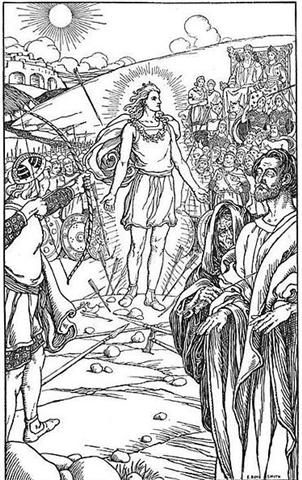
All sit down and
converse together. They rehearse
their runes and talk of events of
old days. Then they find in the
grass the golden tablets that the
Aesir once played with.

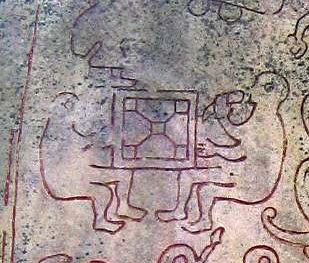


Two children of
men will also be found safe from the
great flames of Surt.

Their names,
Lif and Lifthrasir, and they feed on
the morning dew and from this human
pair will come a great population
which will fill the earth. And
strange to say, the sun, before
being devoured by Fenrir,

will have
borne a daughter, no less beautiful
and going the same ways as her
mother.'
Then, all at once, concludes
Snorri's tale wryly, a thunderous
cracking was heard from all sides,
and when the King looked again, he
found himself on the open plain and
the great hall had vanished ...

The open plain
(→ planets) may have referred to the
ecliptic plane, where the planets
moved - the stars which were not
fixed (not 'dead' but 'alive' and
moving). Or
the open plain could have been the surface of
Mother Earth herself.
... Considering the fact that the
crossroads of ecliptic and Galaxy
are crisis-resistant, that is, not
concerned with the Precession, the
reader may want to know why the
Mangaians thought they could go to
heaven only on the two solstitial
days. Because, in order to 'change
trains' comfortably, the
constellations that serve as 'gates'
to the Milky Way must 'stand' upon
the 'earth', meaning that they must
rise heliacally either at the
equinoxes or at the solstices. The
Galaxy is a very broad highway, but
even so there must have been some
bitter millenia when neither gate
was directly available any longer,
the one hanging in midair, the other
having turned into a submarine
entrance ...
Everything which was carríed onboard the Royal Double Canoe was
essential for life. The enumeration of species in
Manuscript E, which I have suggested was beginning at Algenib
Pegasi (*1), had the bitter taro
named kape 80 species (days) later, the posionous
plant which needed 15 days in the earth oven (the womb
of Mother Earth) to become harmless.
This could mean we should
count 15 kinds of species (right ascension days) ahead
from kape in order
to arrive at a star which would 'return the life anew'. *81 + *15 = *96 (and 350 + 15 = 365).
...
their separation from the sun is just beyond the minimum
distance 16° that a star may be from the sun and still
be visible ...
|
10 + 2 variants of taro brought
by Oti from the plantation of Teke: |
|
1 |
*70 |
ngeti uri. |
a Teke. a Oti. |
|
2 |
*71 |
ngeti tea. |
|
3 |
*72 |
he ngaatu. |
|
4 |
*73 |
he tuitui koviro. |
|
5 |
*74 |
he ketu anga mea. |
|
6 |
*75 |
he ketu takarua. |
|
7 |
*76 |
he teatea. |
|
8 |
*77 |
he ngu haha tea. |
|
9 |
*78 |
he mango. |
|
10 |
*79 |
he hahara rapanui |
|
1 |
*80 |
he ti. |
|
1 |
*81 |
he kape. |
|
1 he
ti. |
1
he kape. |
|
Ti
by lying with Tattooing made the ti plant (he
ti ki ai ki roto ki a he ta ka pu te ti). Burnt
ti leaves were used to produce the black dye
for tattooing.
... To be in heat, to
copulate, to embrace; concupiscence, fornication,
impurity; lascivious, impure (ai) ...

Kape.
'Bitter-taro' (Alocasia
macrorrhiza). In 1957 kape was still
cultivated in much the same way as dry taro. It is a
type of food to be eaten during times of famine.
According to Fuentes (1960:856), the tubers had to
be kept in the earth-oven for 15 (sic) days
in order to eliminate some of the poisonous
components. Barthel 2. Arum, yam. Churchill.
Bitterness by
doing it with Bad-taste produced the kape (mangeongeo
ki ai ki roto he rakerake ka pu te kape). |
|
APRIL 6 (96 = 3 *
32) |
7 (*17) |
 |
 |
|
Ga1-16 |
Ga1-17 |
|
Shur-narkabti-sha-iltanu-5 (Star in the Bull towards
the north)
σ
Aurigae (80.4),
BELLATRIX (Female Warrior)
=
γ
Orionis,
SAIF AL JABBAR (Sword of the Giant)
=
η
Orionis
(80.7),
ELNATH (The Butting One)
=
β
Tauri = γ Aurigae
(80.9)
*39.0 = *80.4 - *41.4 |
ψ
Orionis (81.1),
NIHAL (Thirst-slaking Camels)
=
β
Leporis
(81.7) |
 |
|
June 9 (*445 =
*365 + *80) |
10 (161) |
|
... The month,
which takes its name from Juppiter the oak-god,
begins on June 10th and ends of July 7th. Midway
comes St. John's Day, June 24th, the day on which
the oak-king was sacrificially burned alive. The
Celtic year was divided into two halves with the
second half beginning in July, apparently after a
seven-day wake, or funeral feast, in the oak-king's
honour ...
 |
|
°June 5 (156) |
6 (*77) |
|
'May 13 |
14 (*54) |
|
"April 29 (*39) |
Vaitu
Nui 30 |
|
CLOSE TO THE FULL
MOON: |
|
OCT 6 (279 = 9 *
31) |
7 (*200) |
|
β, γ Arae (263.3), κ Arae (263.5), σ Ophiuchi
(263.6) |
LESATH (Sting) = υ Scorpii,
δ
Arae (264.7),
CHOO
(Club) = α Arae
(264.9) |
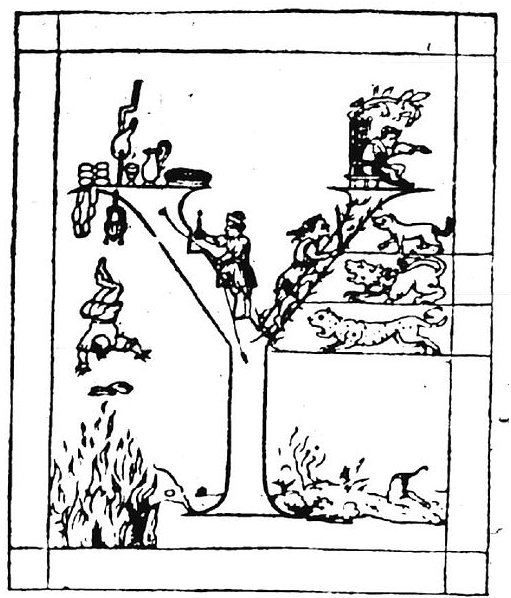
... For they say
that the course of human life resembles the letter
Y, because every one of men, when he has reached the
threshold of early youth, and has arrived at the
place 'where the way divides itself into two parts',
is in doubt, and hesitates, and does not know to
which side he should rather turn himself´...


 |

|
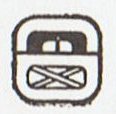 |
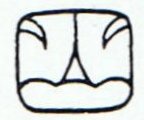 |
 |
|
uo ('imprisoned') |
akbal (night) |
quincunx (yellow) |
... we see the Xul-animal,
all his facial marks appearing, hanging by his tail
from the sky-band. With tail and both paws he holds
flaming torches. Above in the text [Dresden Codex,
55.g.] we can see our form 19.3.1;

... the
superfix is a club [cfr Choo, α Arae],
constantly appearing as an instrument of attack; it
is neither spear nor knife, and also shows the same
marks as are seen on wooden posts, for the knots;
the prefix we shall later see defined as the
conventionalized flames of firewood ... These three
elements united, the cauac, or Storm,
relámpago, rayo or lightning bolt as
rendered in the above cited vocabularies, with the
club or stick as superfix, and the flames as prefix,
give a complete compound for 'thunderbolt' ... |
|
Dec 9 (343 = 7 *
49 = 279 + 8 * 8) |
10 (161 + 183) |
|
°Dec 5 (339) |
6 (*260) |
|
'Nov 12 (*236 = 8
* 29½) |
13 (317 = 161 +
12 * 13) |
|
"Oct 29 (*222) |
Tangaroa Uri 30 |
First among these 15 days inside the 'earth oven' (umu)
there were 'thirstslaking camels' (*81 at kape). Then came a
pair of great female trees (such which delivered strings
etc).
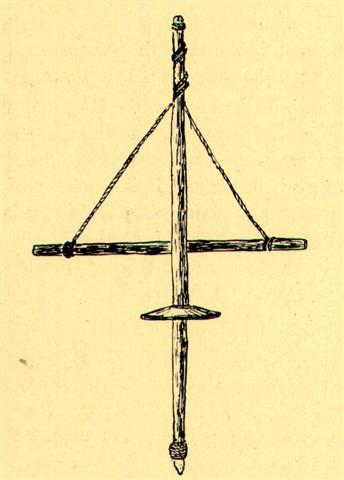
... the first pair of trees (hauhau
and mahute) [in the immigrant lists according to
manuscript E], indispensable to the island's economy, are
followed by a second pair of plants that share the same
environment. They are ngaatu (Scirpus riparius)
and tavari (Polygonum acuminatum). Both grow
in the water lakes, used by the Easter Islanders for a
variety of purposes. Rushes (SPAN.
totora) were one of the most important raw materials
on an island lacking an ample supply of wood. Made into
mats, rushes served as beds, as packing material, and as
material for the construction of huts and canoes, and they
were used to make masks, hats, and many types of baskets.
... I have had a photograph taken for
you, showing you the natives in the very act of producing
fire, and have also sent you the identical sticks used on
that occasion. You will notice that the wood is of a soft
and spongy nature. It grows abundantly on these islands, and
is a variety known as the Hibiscus tiliaceus, and
called by the natives 'Purau' and 'Fau',
pronounced 'Purow' and 'Fow', 'ow'
being sounded as in the word 'how' ...
|
1 he hauhau. |
1 he mahute. |
1 he ngaatu |
|
... The planting of rushes in the crater lakes is supposed to
have been the work of the culture hero Ure.
Proceeding from Anakena, Ure planted the top
part of the plant in Rano Aroi, the stem in Rano
Raraku, and the bottom part in Rano Kau (ME:364)
...
Gaatu, totora
reed. Vanaga.
Gaatu 1.
Bulrush, reed. 2. (gatu).
Churchill.Gatu.
Gaatu, totora
reed. Gatu:
1. To press, to
tighten, to squeeze.
2. To pack tight. 3.
To pull suddenly, to
give a jerk. I ka
hakarogo atu, ku eke
á te kahi, he gatu
mai, as soon as
he felt the tuna be,
he pulled in [the
line] with a sharp
jerk. 4. To kick. 5.
E gatu te hagu,
to wait for
something
impatiently (gatu,
breath). 6. Shortly,
very soon. He
tu'u gatu, he is
coming shortly, he
is just about to
arrive. Vanaga.
Bulrush, reed.
Gaatu (gatu)
1. To feel of, to
pinch, to throttle
with the hands, to
touch, to press (gaatu);
gatuga,
pressure;
gatugatu, to
trample down. T
Mgv.: natu,
to press out linen,
to squeeze a person
or a sore place.
Mq.: natu, to
pinch. Ta.: natu,
to pinch, to bruise.
2. To suppurate. 3.
Gatu mai gatu atu,
sodomy. Gatua
(gatu 1),
tractable, to
press.
Churchill.
Scirpus riparius
var. paschalis.
Barthel 2.
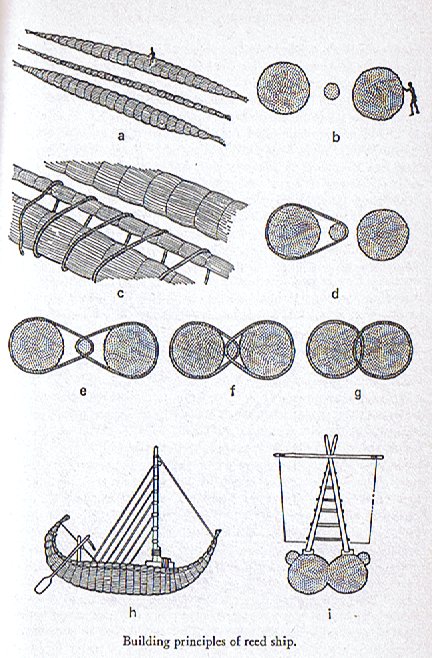
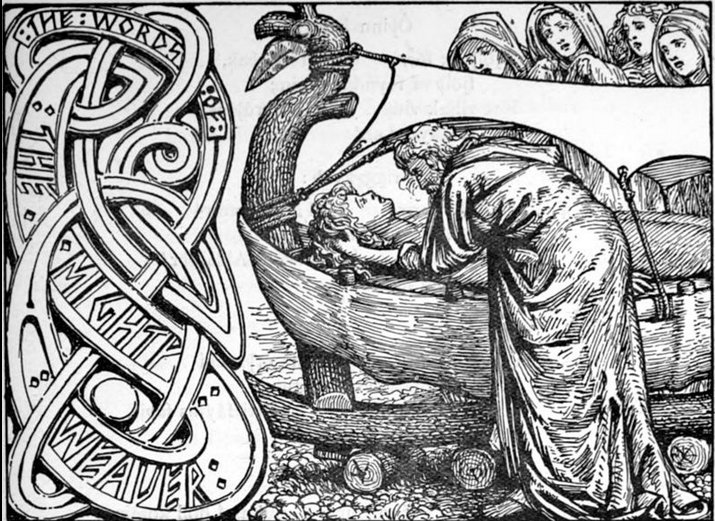
... All this,
which in so many
ways parallels
the normal
imagery of the
Old World
culture-hero
myths, telling
of the one who
is gone, dwells
underground in a
happy, timeless
land, as lord of
the realm of the
happy dead, like
Osiris,
but will rise
again, we can
read
without
surprise. But
what is
surprising
indeed was the
manner of
Quetzalcoatl's
actual return.
The priests and
astrologers did
not know in what
cycle he was to
reappear;
however, the
name of the year
within the cycle
had been
predicted, of
old, by
Quetzalcoatl
himself. Its
sign was 'One
Reed' (Ce
Acatl),
which, in the
Mexican
calendar, is a
year that occurs
only once in
every cycle of
fifty-two. But
the year when
Cortes arrived,
with his company
of fair-faced
companions and
his standard,
the cross, was
precisely the
year 'One Reed'.
The myth of the
dead and
resurrected god
had
circumnavigated
the globe
...
|
1 |
Cipactli
(alligator) |
11 |
Ozomatli
(monkey) |
|
2 |
Ehecatl
(wind) |
12 |
Malinalli
(grass) |
|
3 |
Calli
(house) |
13 |
Acatl
(reed) |
|
4 |
Cuetzpallin
(lizard) |
14 |
Ocelotl
(jaguar) |
|
5 |
Coatl
(serpent) |
15 |
Cuauhtli
(eagle) |
|
6 |
Miquitztli
(death) |
16 |
Coz-cacuauhtli
(buzzard) |
|
7 |
Mazatl
(deer) |
17 |
Ollin
(movement) |
|
8 |
Tochtli
(rabbit) |
18 |
Tecpatl
(flint
knife) |
|
9 |
Atl
(water) |
19 |
Quiahuitl
(rain) |
|
10 |
Itzcuintli
(dog) |
20 |
Xochitl
(flower) |
|
20 * 13
= 260
and 13 *
13 = 169
= 260 -
91.
 |
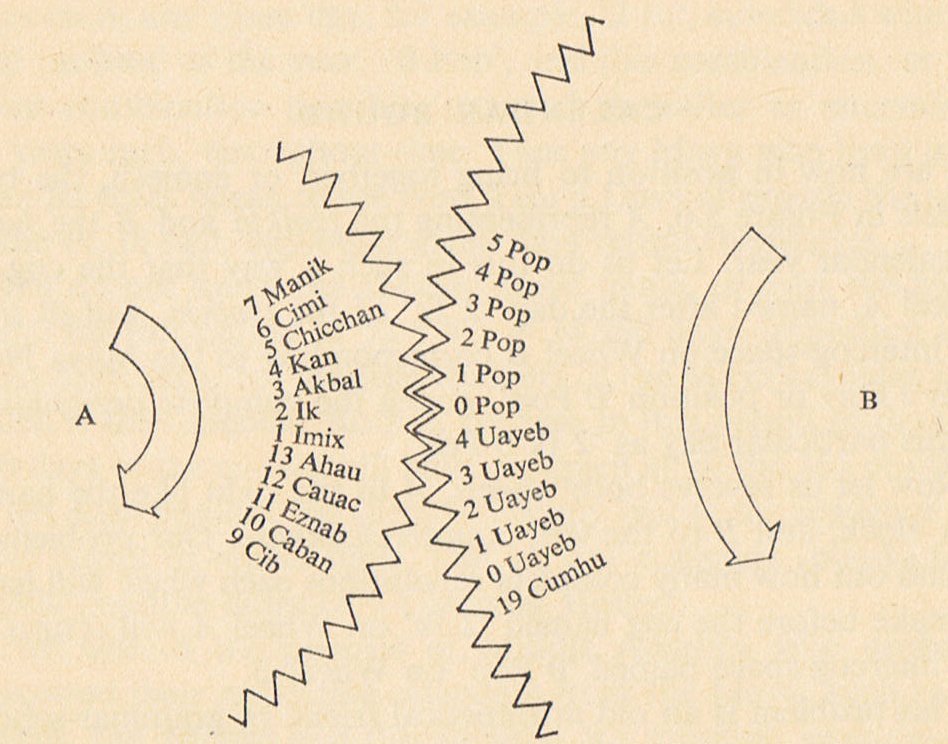
|
|
APRIL 8 |
9 (*19) |
10 (100 = 88 + 12) |
 |
 |
 |
|
Ga1-18 |
Ga1-19 |
Ga1-20 |
|
KHUFU
MINTAKA (Belt)
=
δ
Orionis,
υ
Orionis (82.4),
χ
Aurigae (82.5),
ε
Columbae (82.6)
*41 = *82.4 - *41.4 |
KHAFRE
Al Hak'ah-3 (Brand)
/
Mrigashīrsha-5
(Stag's Head) /
Turtle Head-20
(Monkey) /
Mas-tab-ba-tur-tur
(Little Twins)
ARNEB =
α Leporis,
CRAB NEBULA
= M1 Tauri
(83.0,
φ¹
Orionis (83.1),
HEKA = λ Orionis,
ORION NEBULA
= M42
(83.2),
φ²
Orionis (83.6),
ALNILAM (String of
Pearls)
= ε Orionis
(83.7) |
MENKAURE
Three Stars-21
(Gibbon) /
Shur-narkabti-sha-shūtū-6
(Star in the Bull
towards the south)
/
ANA-IVA-9 (Pillar of
exit)
HEAVENLY GATE
= ζ Tauri,
ν
Columbae (84.0),
ω
Orionis (84.2),
ALNITAK (Girdle)
= ζ Orionis,
PHAKT (Phaet)
= α Columbae
(84.7) |
|
June 11 |
12 (163 = 136 + 27 =
263 - 100) |
13 (*84) |
|
°June 7 |
8 |
9 (*80) |
|
'May 15 (365 + 135 =
500) |
16 (136 = 8 * 29½ -
100) |
17 (*57) |
|
The Julian calendar
had been 10 days
ahead at the time
when Gregory XIII
launched his new
calendar and then 2
more (days ahead)
would have to be
subtracted if the
change from the
Julian to the
Gregorian calendar
had happened later
at the time when the
King of Spain took
command over Easter
Island in 20
November (324) AD
1770. Which means 10
+ 2 number of taro
varieties could have
referred not only to
a change in the
number of months but
also to number of
days needed to add
in order to return
from the Gregorian
to the Julian dates.
|
59 |
 |
520 |
 |
13 * 37 |
 |
270 |
 |
|
Ab1-1 (→ 11) |
Ab7-26 (→ 12
* 36) |
Aa5-7 |
Aa8-26 (→ 12
* 41) |
|
580 = 20 *
29 |
26 * 29 =
755 - 1 |
|
1334 = 5
* 254 +
64 =
46 * 29 =
1335 - 1 = 5
* 267 - 1
267 =
September 24 |
|
236 (Moon) +
263 (Venus)
= 499.
... Notably
the Raven,
who was
ascending in
day 236 (= 8
* 29½) in
Roman times
('August 24),
had moved
ahead due to
the
precession
with 27 days
to 'a clean
cup' in day
263 at the
time of
rongorongo
...
.jpg) |
|
|
"May 1 (121 = 11 *
11) |
2 |
3 (*43) |
|
... the real
surprise revealed by
Bauval's
astronomical
calculations was
this: despite the
fact that some
aspects of the Great
Pyramid did relate
astronomically to
the Pyramid Age, the
Giza monuments as a
whole were so
arranged as to
provide a picture of
the skies (which
alter their
appearance down the
ages as a result of
the precession of
the equinoxes) not
as they had looked
in the Fourth
Dynasty around 2500
BC, but as they had
looked - and only
as they had looked -
around the year
10,450 BC ...

.jpg)
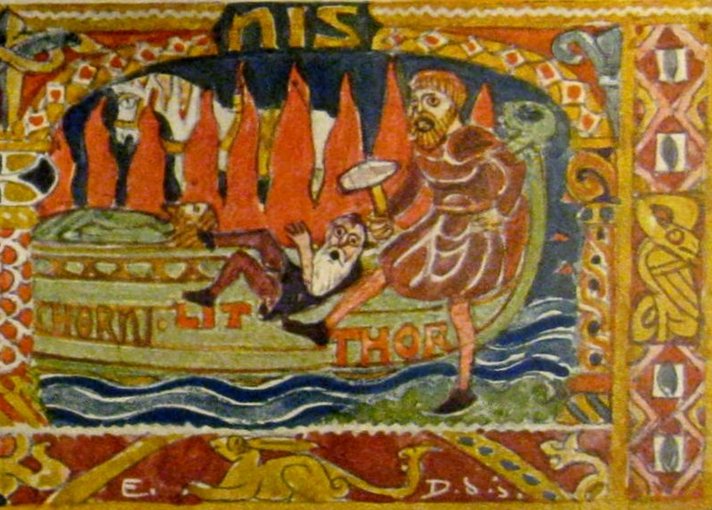
... According to
Gylfaginning,
following the murder
of Baldr by Loki,
the other gods
brought his body
down to the sea and
laid him to rest on
the ship. They would
have launched it out
into the water and
kindled a funeral
pyre for Baldr but
were unable to move
the great vessel
without the help of
the giantess
Hyrrokkin, who was
sent for out of
Jötunheim. She then
flung the ship so
violently down the
rollers at the first
push that flames
appeared and the
earth trembled, much
to the annoyance of
Thor. Along with
Baldr, his wife
Nanna was also borne
to the funeral pyre
after she had died
of grief. As Thor
was consecrating the
fire with his hammer
Mjolnir, a dwarf
named Litr began
cavorting at his
feet. Thor then
kicked [gaatu]
him into the flames
and the dwarf was
burned up as well
... |
|
CLOSE TO THE FULL
MOON: |
|
OCT 8 |
9 |
10 (283) |
|
Al Shaula-17
ALWAID (Mother
Camels) =
β
Draconis, MAASYM
(Wrist) =
λ
Herculis
(265.1),
SHAULA (Sting)
=
λ
Scorpii
(265.3),
KUMA =
ν
Draconis
(265.6),
σ
Arae (265.9)
HAMAL (α ARIETIS) |
RAS ALHAGUE (Head of
the Serpent Charmer)
= α Ophiuchi
(266.1),
SARGAS = θ Scorpii (266.3),
μ Ophiuchi, π Arae
(266.5),
NAN HAE (Southern
Sea) = ξ Serpentis
(266.6), AL
DHĪLI (The Wolf)
= ω Draconis,
ι Herculis (266.7) |
λ
Arae (267.1),
GIRTAB (Seizer)
=
κ
Scorpii,
ο
Serpentis (267.6),
DSIBAN (Wolf Pair)
=
ψ
Draconis
(267.9) |
|
Dec 11 (345) |
12 |
13 |
|
°Dec 7 (*261 = 9 *
29) |
8 |
9 (343 = 7 * 7 * 7 |
|
'Nov 14 (318) |
15 |
16 (*240) |
|
"Oct 31 (304) |
"Nov 1 (*225) |
2 |
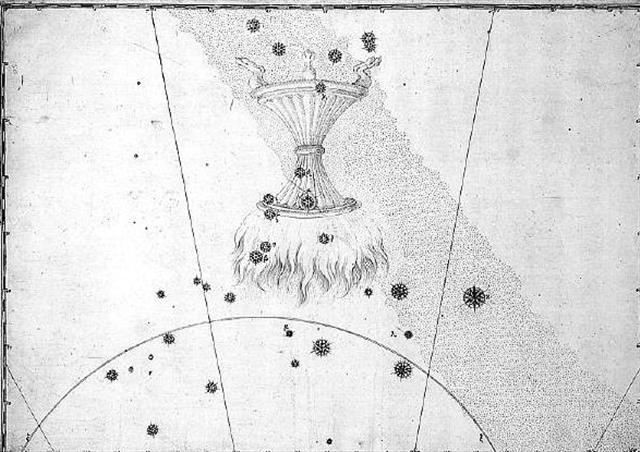
... It is known that
in the final battle
of the gods, the
massed legions on
the side of 'order'
are the dead
warriors, the
'Einherier' who once
fell in combat on
earth and who have
been transferred by
the Valkyries to
reside with Odin in
Valhalla - a theme
much rehearsed in
heroic poetry. On
the last day, they
issue forth to
battle in martial
array. Says
Grimnismal (23):
'Five hundred gates
and forty more - are
in the mighty
building of Walhalla
- eight hundred
'Einherier' come out
of each one gate -
on the time they go
out on defence
against the Wolf.'
That makes 432,000
in all, a number of
significance from of
old. This number
must have had a very
ancient meaning, for
it is also the
number of syllables
in the Rigveda. But
it goes back to the
basic figure 10,800,
the number of
stanzas in the
Rigveda (40
syllables to a
stanza) [40 * 270 =
10800] which,
together with 108,
occurs insistently
in Indian tradition,
10,800 is also the
number which has
been given by
Heraclitus for the
duration of the
Aiōn, according to
Censorinus (De die
natali, 18), whereas
Berossos made the
Babylonian Great
Year to last 432,000
years. Again, 10,800
is the number of
bricks of the Indian
fire-altar
(Agnicayana). 'To
quibble away such a
coincidence',
remarks Schröder,
'or to ascribe it to
chance, is in my
opinion to drive
skepticism beyond
its limits.'
...
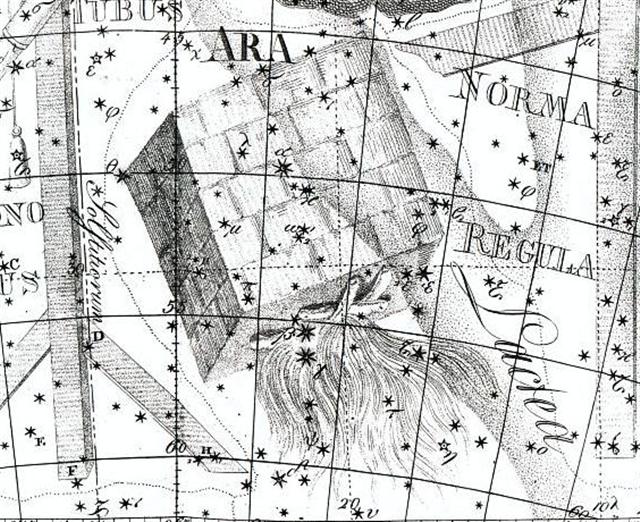 |
I.e. the list of 'all sorts of things' could
have begun at right ascension day *84
(presumably referring to day 84 = Julian
equinox). And *84 + *16 = *100:
|
he huru o te me'e [E:69]
Huru. Custom,
tradition, behaviour,
manners, situation, circumstances; poki huru hare,
child who stays inside (to keep a fair complexion);
te huru o te tagata rivariva, a fine person's
behaviour; pehé te huru o Hiva? what is the
situation on the mainland? Huruhuru, plumage,
feathers (the short feathers, not the tail
feathers), fleece of sheep. Vanaga. Samoa: sulu, a torch; to light by a torch;
sulusulu,
to carry a torch; susulu, to shine (used of
the heavenly bodies and of fire). Futuna: susulu,
the brightness of the moon. Tonga: huluaki,
huluia, huluhulu, to light, to
enlighten; fakahuhulu, to shine; iuhulu,
a torch or flambeau, to light with a torch. Niuē:
hulu, a torch; huhulu, to shine (as the
moon). Maori: huru, the glow of the sun
before rising, the glow of fire. Churchill 2. |
|
1 |
he |
ngaatu (*84) |
a Oti. |
|
1 |
tavari |
|
1 |
riku |
|
1 |
ngaoho |
|
1 |
naunau. |
|
1 |
uku koko |
|
1 |
nehenehe |
|
1 |
poporo. |
|
1 |
kavakava atua |
|
1 |
kohe. |
|
1 |
nehenehe [sic!] |
|
1 |
pua |
|
1 |
harahara |
|
1 |
hua taru. |
|
1 |
makere |
|
1 |
hata. |
|
1 |
tuere heu.
(*100) |
|
1 |
tureme |
|
1 |
matie. |
|
1 |
pua nakonako. |
|
1 |
ipu ngutu |
... Teke said to Oti, 'Go and take the hauhau tree, the
paper mulberry tree, rushes, tavari plants, uku koko grass,
riku ferns, ngaoho plants, the toromiro tree, hiki kioe
plants (Cyperus vegetus), the sandalwood tree,
harahara plants, pua nakonako plants, nehenehe ferns, hua
taru grass, poporo plants, bottle gourds (ipu ngutu),
kohe plants, kavakava atua ferns,
fragrant tuere heu grass, tureme grass (Dichelachne
sciurea), matie grass, and the two kinds of cockroaches
makere and hata.' Oti and all his assistants
went and took the hauhau tree with them. All kinds of things
[te huru o te mee] (i.e., plants) and insects [?]
were taken along ...
[E:69]
.jpg)
|































.jpg)

.jpg)



.jpg)